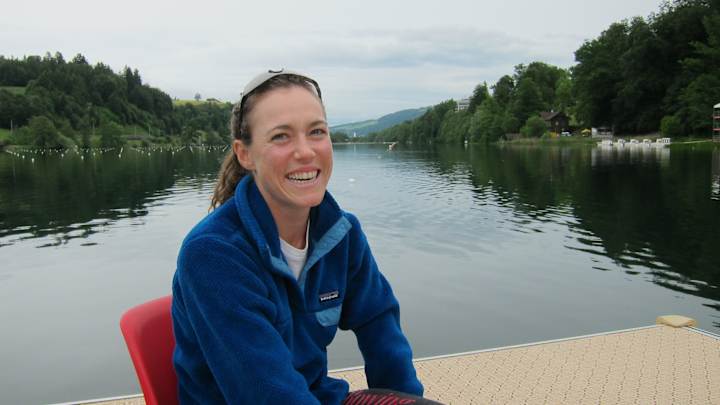What does the cox say? Seat No. 9 keeps the rowers in line

In Olympic rowing, two people make a ''pair'' and four make a ''four'' but eight won't do for an ''eight.''
Sitting in the stern in the biggest boat class is a ninth crew member, facing the others. He or she is the coxswain, typically a small person who plays such a big role that calling the boat a ''nine'' might seem more appropriate.
''She's our eyes and ears,'' said Meghan Musnicki of the U.S. women's eight, the two-time defending Olympic champions, describing the role of coxswain Katelin Snyder . ''And basically our brain. Because we're just hauling on it. And in a lot of pain.''
The coxswain, or cox, keeps the boat going straight and the oars swinging in sync and lets the crew know who's ahead and who's behind and by how much. If done right, the cox's commands help the rowers push past the pain barrier and keep pulling those oars when every muscle fiber tells them to stop.
It's a delicate task. How do you make rowers who already feel they're giving everything to give even more, when you're sitting in that ninth seat in relative comfort? Just telling them to ''go faster'' won't cut it.
''Definitely not!'' said Snyder, 28. ''`Go faster' could mean pull harder with my arms or it could mean swing more with my body or step quicker with my legs. So when I want them to go faster I have to specify where and how we're going to do that together.''
The men's and women's eight are the only boats with a coxswain in the Olympic regatta.
It's a job that can seem thankless.
''You pretty much can only screw up,'' says U.S. women's coach Tom Terhaar. ''They don't get a lot of credit when they do a good job. And if they make a mistake it's obvious.''
A bad cox is just dead weight, literally. The coxswains don't row, and they slow the boat down with their body weight, which explains why they tend to be so petite.
The minimum weight for a cox in international rowing is at least 55 kilograms (121 pounds) for men and 50 kilograms (110 pounds) for women.
Frances Turner, who coxes New Zealand's women's eight, said she started off rowing but soon realized she was ''too short and too loud and that I would be much better suited as a cox.'' She thinks of herself partly as a psychologist, whose job starts long before the race begins.
''You've got to know the athletes inside out,'' Turner said. ''Know their trigger points. Know how the boat's feeling. And pull on those trigger points in a race when you need them so you can get the boat working completely harmoniously.''
In training, the coxswains focus on stroke rates and other technical details and generally stay calm. In racing, they get loud and occasionally foul-mouthed as they try to squeeze every joule of energy out of the crew through the 2-kilometer (1.24-mile) course.
These days the coxswain calls out commands using headsets hooked up to a so-called cox box, which is connected to speakers in the boat and amplifies the coxswain's voice.
''I always get stopped at the airport for it,'' Snyder said. ''It is a circle and it has a timer and a toggle. It looks a lot like a bomb.''
Still, she'd rather have a cox box in Rio than the weird-looking megaphones that coxswains used to strap to their faces in the old days.
''They would scream through cones,'' Snyder said. ''So I'm really happy that's not a thing anymore.''
---
Follow Karl Ritter on Twitter at https://twitter.com/Karl-Ritter
